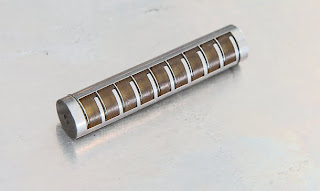
NASA recently formed technical partnerships with the U.S. Air Force and National Renewable Energy Laboratory to address thermal-control concerns in microprocessors. The problem is as old as the days of the integrated circuit which appeared in the 1960's and is the basis for the modern computer age. The more advanced the electronics, the more power it use and the hotter it gets. This can easily lead to overheating which can cause malfunction.
The new EHD thermal control will be demonstrated in June on NASA's Terrier-Improved Orion rocket mission, which is flying the Small Rocket/Spacecraft Technology (SMART) platform. This new microsatellite measures about 16 inches in diameter and was specifically designed to give scientific users less expensive access to space.
According to NASA, the main objective of the EHD demonstration is showing that a prototype pump can withstand the extreme launch loads as the rocket lifts off and hurtles toward space. Should it survive the vibration, the technology will have achieved a major milestone in its development. Another test is set to 2013 when the EHD will be taken into the International Space Station and tested as part of a long-term operation.
Read More
The new EHD thermal control will be demonstrated in June on NASA's Terrier-Improved Orion rocket mission, which is flying the Small Rocket/Spacecraft Technology (SMART) platform. This new microsatellite measures about 16 inches in diameter and was specifically designed to give scientific users less expensive access to space.
According to NASA, the main objective of the EHD demonstration is showing that a prototype pump can withstand the extreme launch loads as the rocket lifts off and hurtles toward space. Should it survive the vibration, the technology will have achieved a major milestone in its development. Another test is set to 2013 when the EHD will be taken into the International Space Station and tested as part of a long-term operation.
Read More